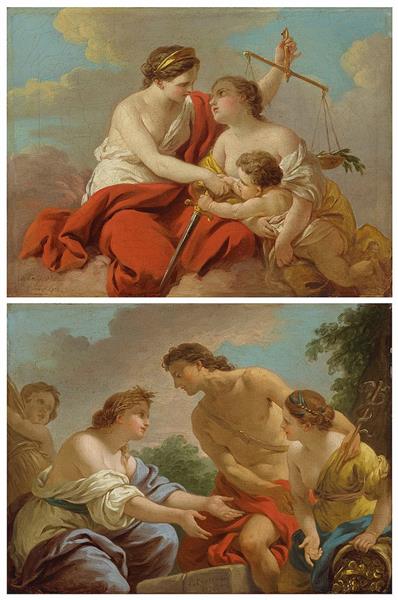描述
路易斯·让·弗朗索瓦(Louis JeanFrançoisTearsee)的作品“束腰外衣和第三强度”是新古典绘画的一个有趣的例子,这种艺术风格以其对清晰度,简单性和对古典古物的理想的强调而着称。 18世纪有影响力的画家Lagénée的特点是它的色彩和形状掌握,以及通过其工作传达高贵的感觉和历史问题的能力。这幅画尤其捕捉了冲突和对比的本质,并与古典叙述一起加入了当代元素。
乍一看,“外衣;第三力”的组成揭示了似乎在激烈的辩论或讨论中的数字的仔细处理。角色所代表的角色之间的张力增强了这种动态对话的感觉。手势和表情虽然微妙,但它传达了几乎明显的对话,这使观众与场景有亲密关系。在这里,Lagénée不仅提出了静态人物,而且设法封装了情感和社会高潮的时刻。
颜色的使用是这项工作的另一个显着方面。 Lagénée使用了一个丰富而和谐的调色板,结合了温暖和冷的色调,产生了视觉平衡,引起人们的思考。角色的字符具有充满活力的蓝色,可以将其解释为崇高的象征,并作为吸引观众注意的资源而升高。与最清晰的资金形成对比,人物可以实现其定义和存在,这种技术唤起了Chiaroscuro的使用来给出数量和深度,这在其时代的艺术中很常见。
通过他的角色探索,眼泪封装了权力和道德的双重性。中心人物似乎是用象征权威和责任的长袍代表的,邀请了有关领导和选举权的解释。这种方法与法国18世纪末期的历史背景有关,这是关于国家力量和人民声音的根本变化和问题的时期。上衣的形象可以看作是一个新时代的象征,即代表大多数人口的阶级的第三个州开始声称自己在社会中的地位。
作品的丰富性不仅在于其美学,还在于其叙述的能力。 Lagénée通过神话与当代的融合来发表重要的社会评论,这一趋势在艺术和他时代的文学中都受到赞赏。当观察到这项工作时,可以找到与当时其他作品的相似之处,在这种情况下,权力和道德面临着值得希腊悲剧的场景。
总之,路易斯·让·弗朗索瓦(Louis JeanFrançois)撕裂的“外衣和第三强度”是一部超越时间的作品,将观众包裹在丰富而复杂的视觉叙事中。通过其创新的构图,颜色的精湛使用以及对普遍和永恒的问题的探索,泪水引起了关于权力,社会责任感和个人对集体的作用的对话。这项工作不仅是新古典主义以其最纯粹的形式的一个例子,而且是社会和政治关注的镜子,标志着他们的时间,目前比以往任何时候都更加共鸣。
KUADROS ©,墙上的著名油漆。
手工制作的油画,具有专业艺术家的质量和独特的印章 KUADROS ©.
图片繁殖服务具有满意保证。如果您对绘画的复制品不完全满意,我们将100%退还您的钱。

